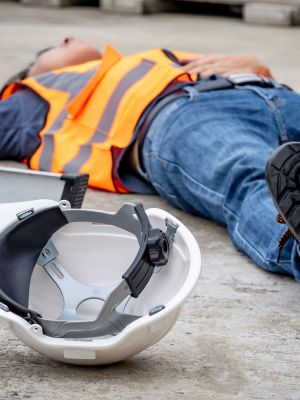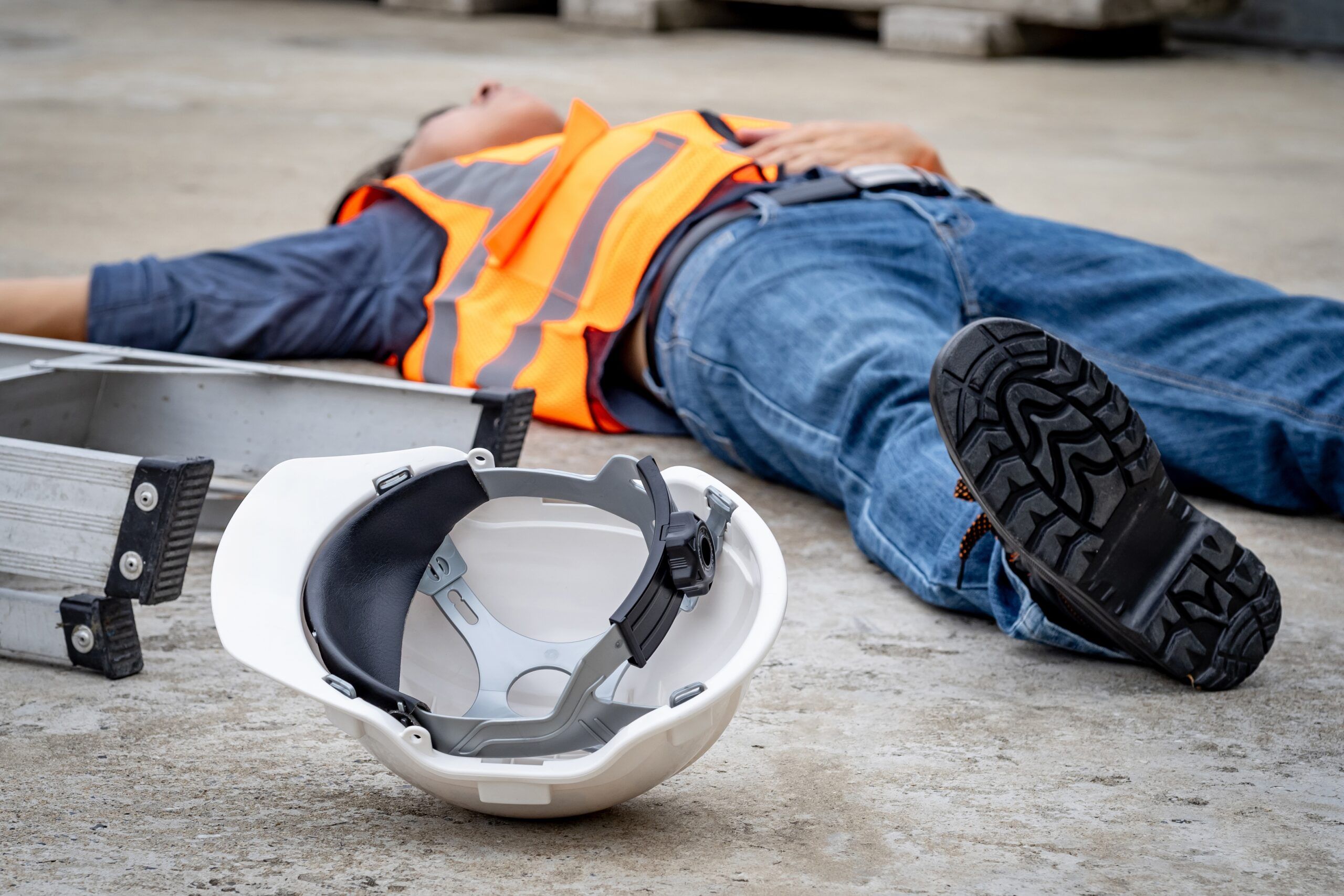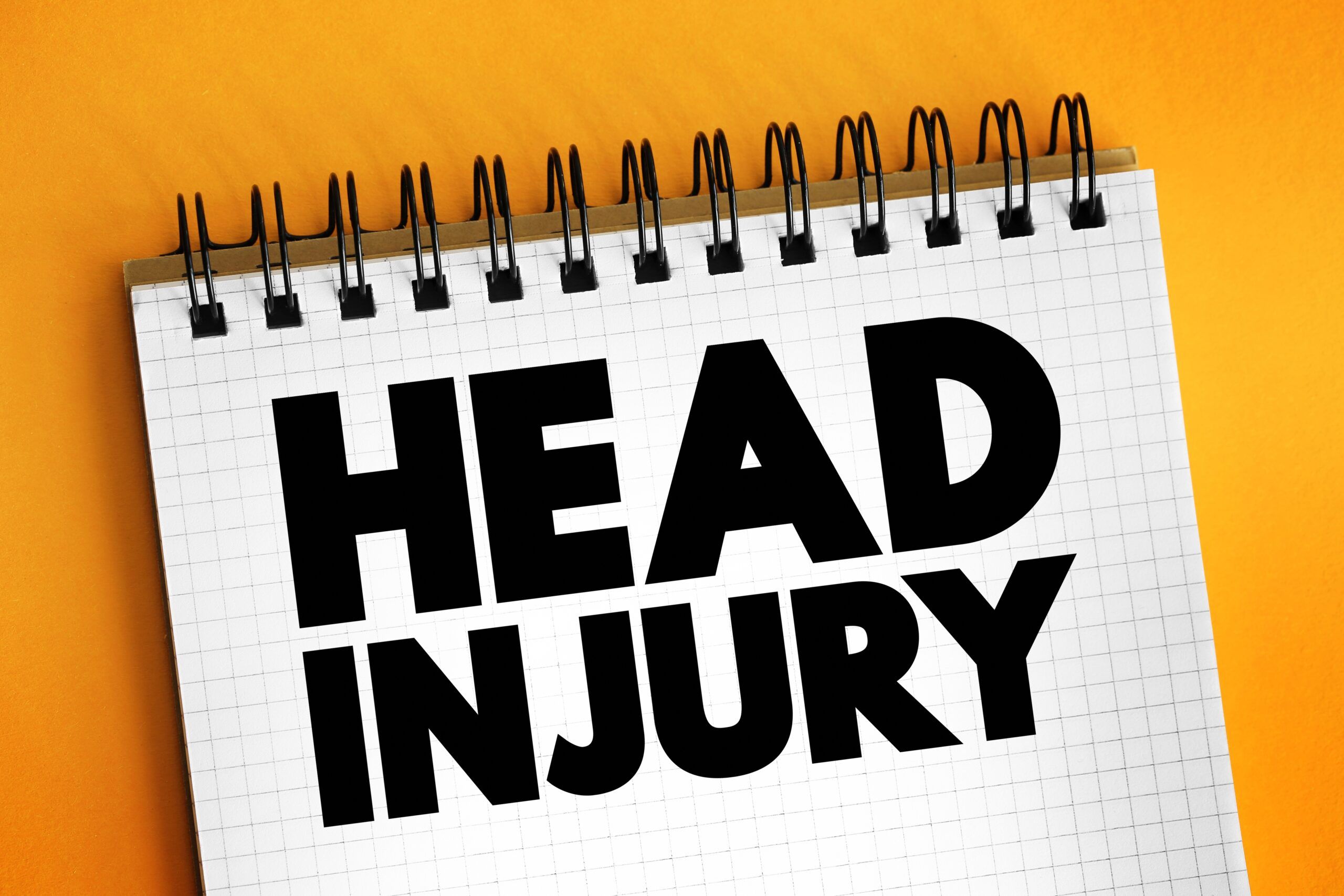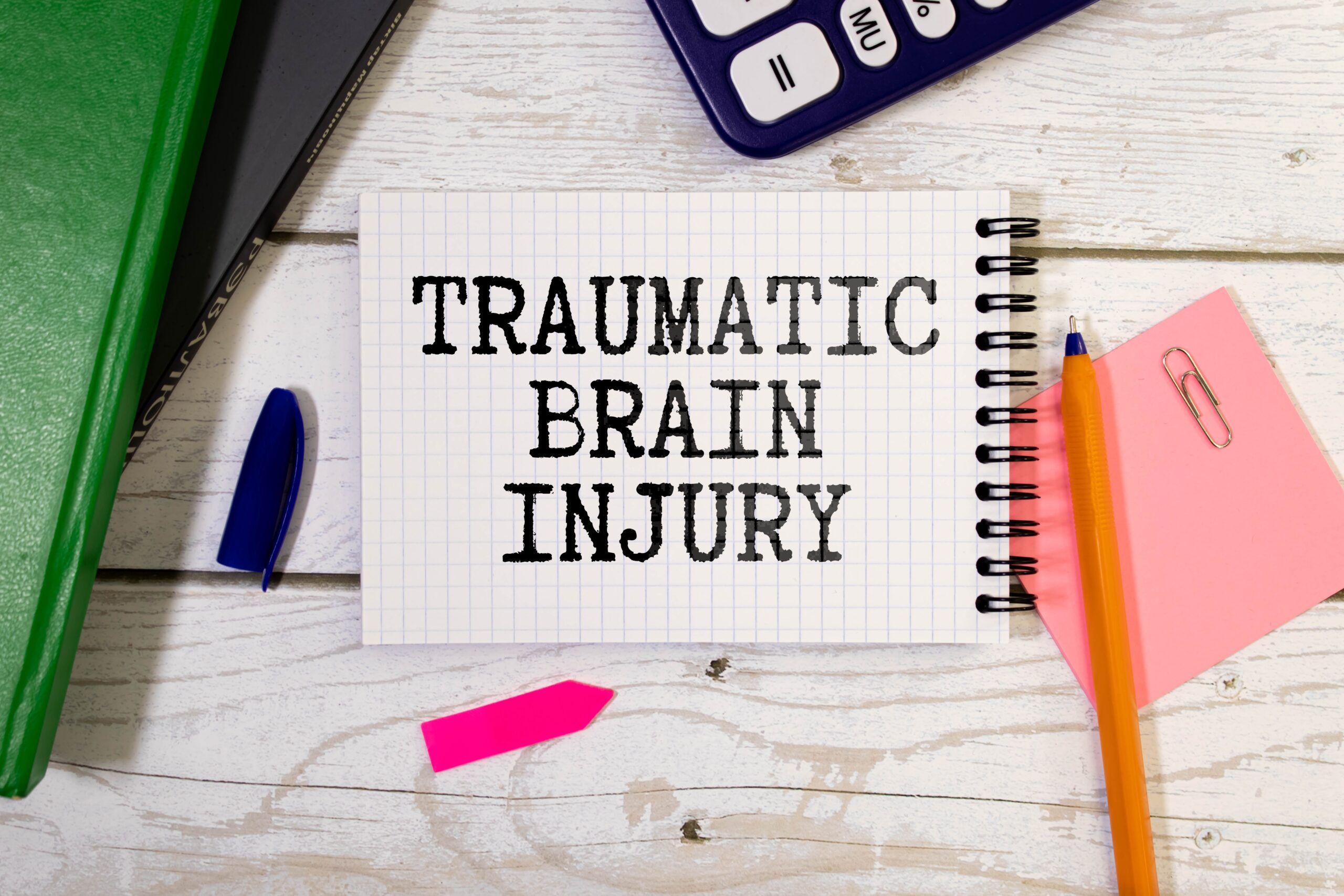How Can I File a Third-Party Claim After a Construction Accident?
Construction sites are reportedly some of the most dangerous places to work. Even with safety protocols, incidents can still occur because of another person’s carelessness or a company’s failure to follow proper procedures. When that happens, workers’ compensation may not be your only option for recovery.
Workers’ compensation benefits cover basic needs such as medical care and partial income replacement. However, they do not compensate for pain and suffering or lifelong impacts on your quality of life. If another party—not your employer or a co-worker—caused your harm, you can pursue a third-party claim. This claim allows you to recover additional compensation that reflects the full scope of your damages.
If you suffered an injury on a construction site, call Brooks Law Firm at (617)245-8090 for a free case evaluation. Our experienced Medford, MA, slip and fall attorneys can review the details of your case, determine whether you qualify for a third-party claim, and aggressively pursue the maximum recovery available under the law.
Key Takeaways Involving Third-Party Claims After a Construction Accident
- Filing a third-party claim following a construction accident allows injured workers to recover far more than workers’ compensation alone can provide.
- These claims hold negligent subcontractors, property owners, and manufacturers accountable when their actions or defective products cause harm.
- Common third-party claim scenarios include vehicle collisions, defective machinery, subcontractor negligence, unsafe premises, and toxic exposure.
- Determining liability can be challenging because construction sites involve multiple parties and overlapping contracts.
- Each situation requires different types of evidence to connect a third party’s negligence to your injury.
- Work with an attorney to ensure that every responsible party is identified and pursued for damages that reflect your full physical, emotional, and financial losses.
What’s the Difference Between Workers’ Compensation and Third-Party Claims?
After a construction accident, remember that you can pursue workers’ compensation and a third-party claim after a construction accident. You must understand the vital differences to know what you can legally recover. Both avenues provide financial relief but serve different purposes and follow different legal rules.
Workers’ compensation is a system that allows injured employees to receive benefits without proving who caused the accident. In most cases, you can collect compensation for medical bills, partial lost income, and disability benefits. However, these benefits are limited because they do not address issues like pain and suffering, emotional distress, or loss of enjoyment of life. You cannot sue your employer directly, even if their negligence contributed to your injury.
In contrast, a third-party claim is a personal injury action filed against a party, not your employer or a co-worker, whose negligence played a role in your accident. This can include a subcontractor who ignored safety rules, a driver who caused a crash at a job site, or a manufacturer that sold defective equipment. Through a third-party claim, you may pursue compensation for the full range of your damages, including:
- Pain and suffering
- Loss of future income
- Diminished earning potential
- Loss of consortium
- Additional medical expenses not covered by workers’ comp.
In short, workers’ compensation covers basic recovery, while a third-party claim allows you to seek complete justice. Many construction accident victims pursue both simultaneously, using workers’ compensation for immediate relief and a third-party claim to recover full damages once liability is clear.
Common Third-Party Claim Scenarios
Construction sites unite numerous workers, contractors, and vendors operating in a fast-paced, high-risk environment. Because of this complexity, an accident does not always involve an employer or co-worker. In many situations, another party’s negligence contributes to the injury, opening the door to a third-party claim. Below are some of the most common examples and how they can lead to compensation beyond workers’ compensation benefits.
Car Accidents
Construction workers frequently operate vehicles or travel between job sites. When another driver, such as a delivery truck operator or commuter, causes a collision, the injured worker may bring a claim against that driver or their employer. This third-party claim can help recover damages outside the scope of workers’ compensation benefits, such as pain and suffering or future loss of earning capacity.
Defective Products
Faulty machinery, tools, or safety equipment can lead to severe injuries. If a piece of equipment malfunctions due to a design or manufacturing defect, the injured worker may launch a product liability claim against the supplier, distributor, or manufacturer. These cases often involve complex technical evidence to show that the failure directly caused the injury, rather than user error or poor maintenance.
Subcontractor Negligence
Many construction projects involve multiple subcontractors working side by side. When a subcontractor ignores safety procedures, leaves debris on walkways, or fails to secure heavy materials, they can cause serious injuries to others on-site. In these instances, the negligent subcontractor or their employer may be liable for resulting injuries under a third-party negligence theory.
Unsafe Premises
If a premises owner fails to maintain safe conditions at the worksite, such as not addressing unstable structures, exposed wiring, or fall hazards, they may be held responsible for injuries. A premises liability claim can arise when unsafe site conditions are known or should have been known but were not properly fixed or warned about.
Toxic Exposure
Workers handling hazardous chemicals, asbestos, or other toxic substances can suffer long-term respiratory or neurological harm. If exposure results from a third party’s negligence, such as a supplier failing to label materials properly or a contractor violating safety standards, a toxic exposure claim may be appropriate.
Filing a Third-Party Claim
Managing a third-party claim after a construction accident requires careful coordination between your workers’ compensation benefits and your separate personal injury claim. The process secures the full range of compensation allowed by law, but it requires strategic handling to prevent conflicts or missed opportunities.
Report the Injury
The first and most important step is immediately reporting your injury to your employer. This sets up an official record of the incident and preserves your eligibility for workers’ compensation benefits. You must follow standard reporting procedures even if you suspect another party is at fault. Documentation from this initial report becomes crucial evidence when establishing how and where the accident occurred.
Identify the Third Party
After documenting your injury, the next step is identifying whether someone other than your employer contributed to the accident. This might include a subcontractor, property owner, equipment manufacturer, or driver. Your construction accident attorney will thoroughly investigate site safety records, witness statements, and maintenance logs to identify all potentially responsible entities. Identifying the correct third party is essential since each may have separate insurance coverage and legal obligations.
File a Claim or Lawsuit
After identifying the responsible party, your attorney will bring a third-party insurance claim or initiate a personal injury lawsuit. This claim is distinct from workers’ compensation, as it targets the negligent party and seeks damages beyond earnings replacement and medical care. These extra damages may involve pain and suffering, diminished ability to enjoy life, and reduced future earning capacity. Filing a timely and well-documented claim ensures your right to recover under both legal systems.
Workers’ Compensation Lien
When pursuing workers’ compensation and third-party claims, your employer’s insurer usually places a lien on your third-party recovery.

This means that a portion of your settlement may reimburse the insurer for already-paid benefits, such as medical bills or temporary disability checks. A construction accident attorney can negotiate to reduce the lien amount, helping you keep more of your total recovery.
Settlement or Trial
After establishing liability and damages, your construction accident lawyer negotiates a fair settlement with the third party’s insurance company. If the parties cannot agree, the case may escalate to trial, where the court will determine the outcome. While settlements resolve most claims, trials can result in larger awards when negligence is clearly proven. Either way, having a well-prepared legal strategy ensures that all immediate and long-term interests are properly valued.
How to Prove Third-Party Liability
Establishing third-party liability in a construction accident requires demonstrating that someone other than your employer acted negligently or failed to uphold a legal duty of care. This process is more complex than filing a standard workers’ compensation claim because it relies on proof of fault rather than automatic eligibility for benefits.
The strength of your evidence determines whether you can secure resources to address pain and suffering, emotional distress, and other non-economic losses unavailable under workers’ compensation. Here are the ways to prove fault in third-party claims after a construction accident:
Establishing Duty of Care
Your attorney must prove that the third party owed you a duty of care, a legal responsibility to maintain safe conditions, or act reasonably. For example, a subcontractor must follow site safety protocols, a property owner must ensure the premises are free from hazards, and a manufacturer must design and produce safe equipment. Proving this duty creates the foundation of your case.
Proving a Breach of Duty
After establishing a duty, you must show how someone breached it. This means demonstrating that the third party failed to act as a reasonably careful person or company under similar circumstances. Examples include failing to install safety guards on machinery, ignoring OSHA regulations, or providing defective materials. Evidence of regulatory violations or repeated safety complaints can strongly support this element.
Causation
It is not enough to show that negligence occurred; your attorney must also connect it directly to your injury. This is known as causation. For example, suppose a subcontractor’s careless handling of heavy machinery caused debris to fall and strike you. In that case, you must prove that direct link using witness statements, photographs, video footage, or professional analysis. Causation distinguishes an unfortunate accident from one that is legally compensable.
Demonstrating Damages
Finally, you must prove that the accident caused actual harm. Damages include medical expenses, rehabilitation costs, lost income, and diminished earning potential. They also cover non-economic losses such as the lost ability to enjoy life, pain and suffering, and emotional distress. Comprehensive medical documentation, professional testimony, and personal statements help quantify these damages and show their ongoing impact on your life.
Preserving Evidence Early
Evidence in construction accident cases fades quickly, making timely documentation key. Photographs of the scene, injury reports, defective equipment, and witness accounts can all be pivotal. In some cases, your attorney may issue preservation letters to prevent the destruction of evidence or hire reconstructionists to analyze how the incident occurred.
Seek Legal Guidance for Your Construction Accident Claim
You have legal options if you suffered an injury on a construction site and can prove that a third party was responsible. These claims require careful investigation, detailed documentation, and strong legal advocacy to ensure you receive full compensation for your losses.

The Medford, MA, personal injury lawyers at Brooks Law Firm are ready to guide you through your options, gather the evidence needed to prove liability, and pursue the recovery allowed by law. Call (617)245-8090 today to schedule your free consultation.
FAQs: Filing Third-Party Claims After a Construction Accident
How long do I have to file a third-party construction accident claim?
In most states, the statute of limitations for personal injury claims is 1 to 3 years from the accident date. However, certain factors can shorten or extend this period, such as when you discovered a toxic exposure injury or whether the liable party is a government entity. Speak with a construction accident lawyer promptly to preserve key evidence and meet deadlines.
What if multiple parties contributed to my construction site injury?
It’s common for construction accidents to involve shared liability. For example, a general contractor may fail to enforce safety protocols, while a manufacturer may provide defective equipment. In such cases, your attorney can pursue compensation from each liable party, increasing the potential recovery through combined settlements or judgments.
Will filing a third-party claim affect my workers’ compensation benefits?
Your workers’ compensation benefits will continue, but if you recover money through a third-party settlement, your employer’s insurer may place a lien on some of those proceeds. This prevents double recovery for the same losses and distributes compensation fairly. However, an attorney can negotiate the lien to maximize the amount you retain from your final settlement, protecting your financial interests.





